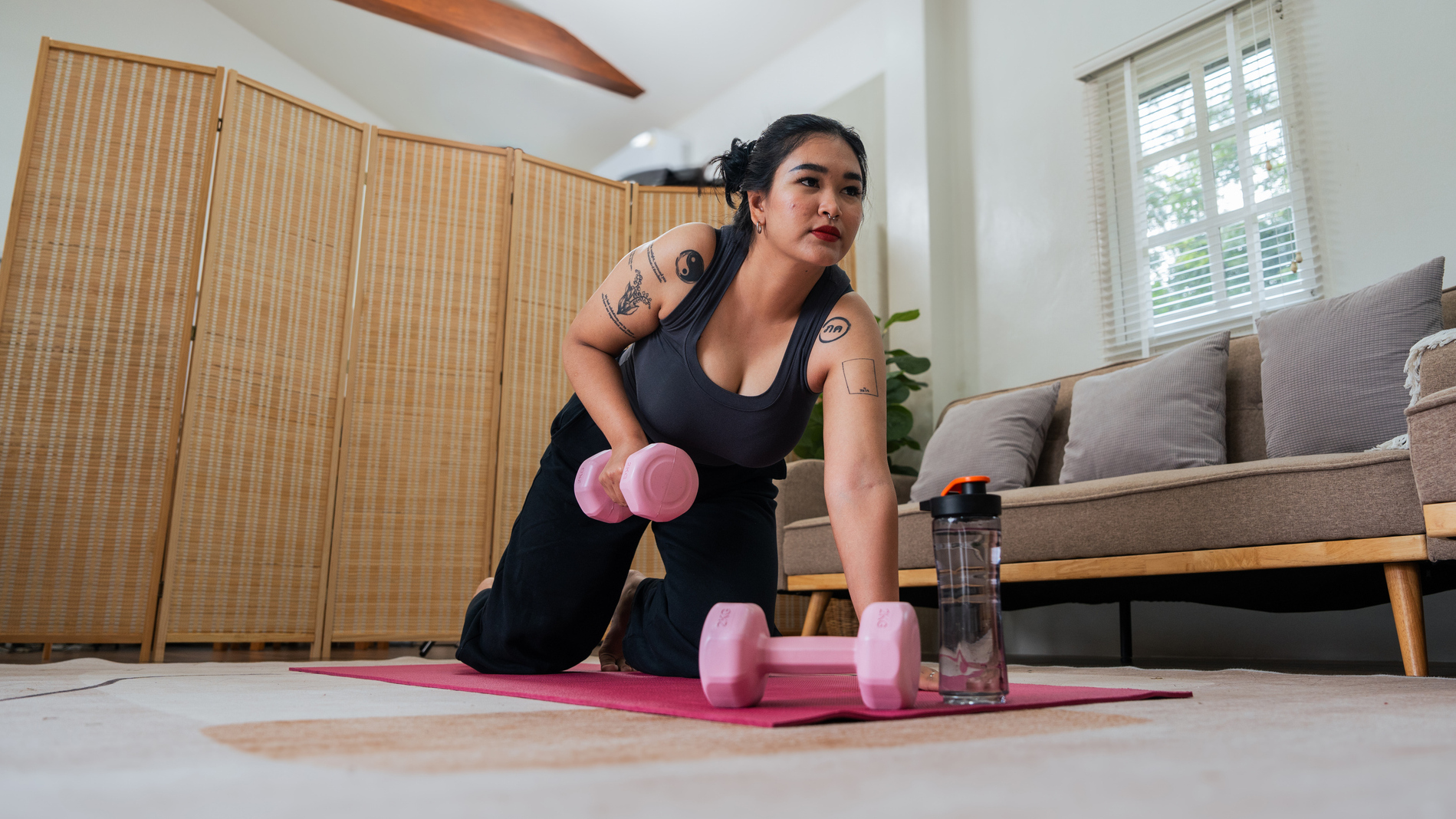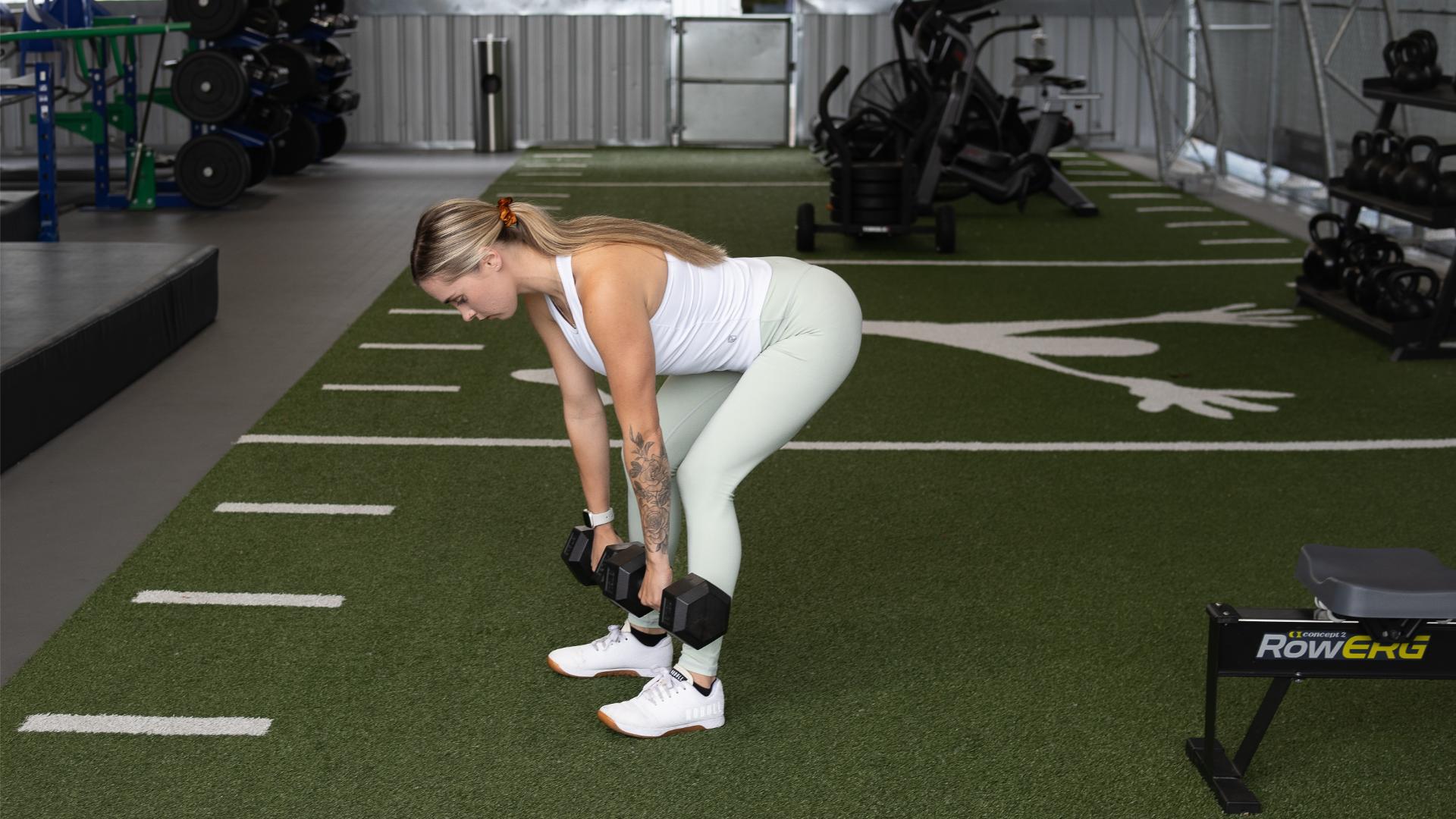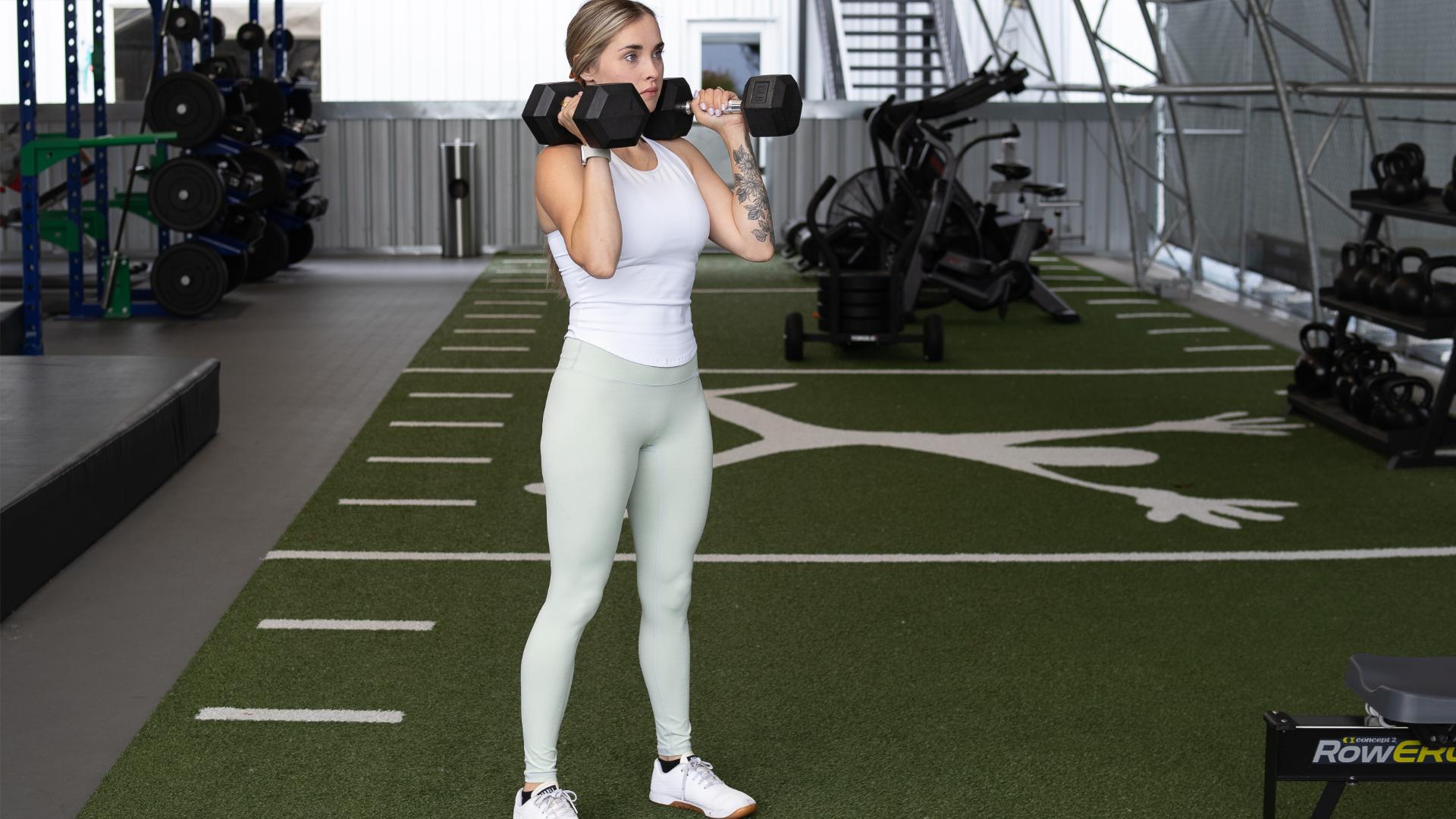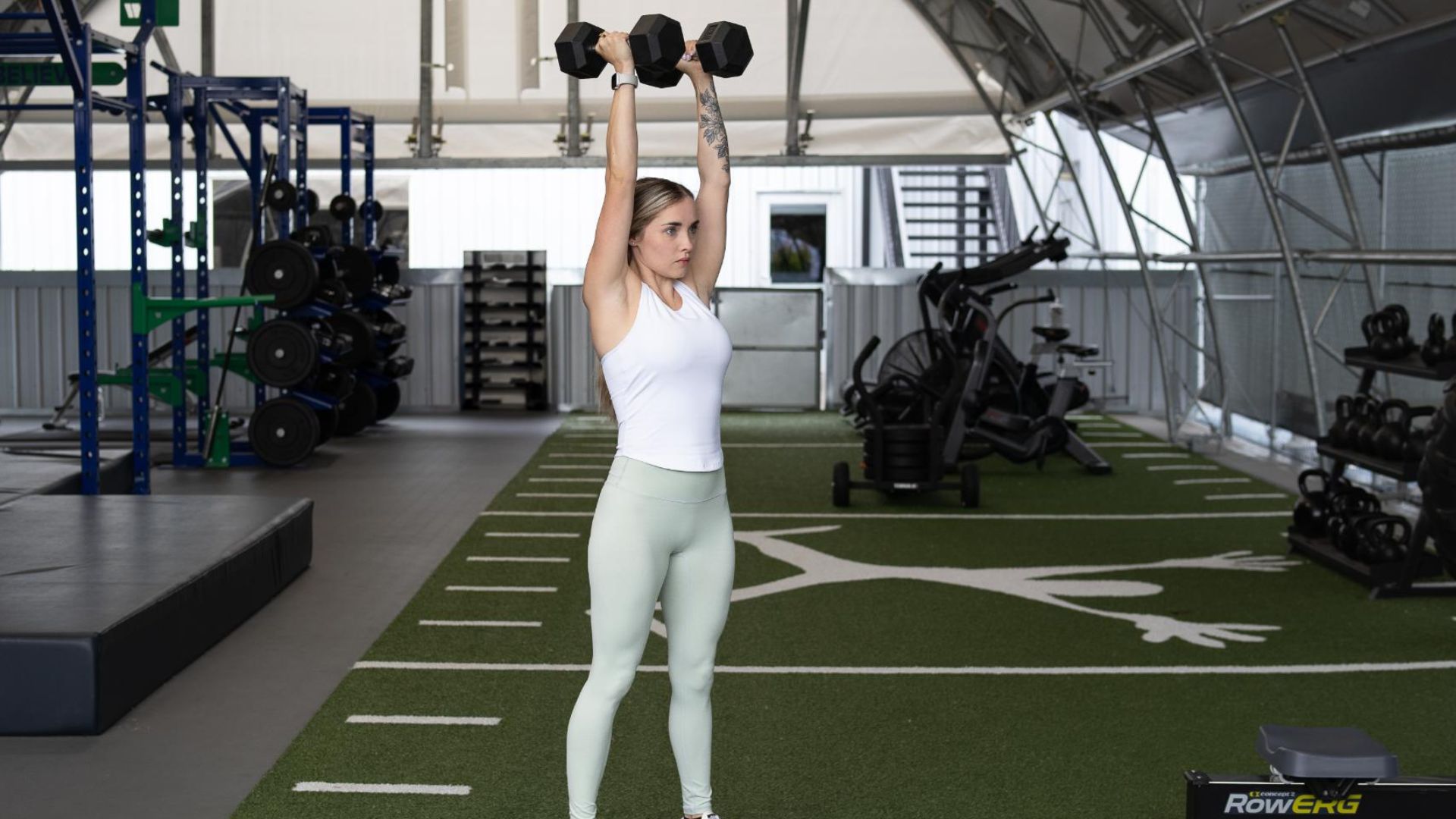
There are countless workouts available online, from TikTok trainers promising bulging biceps to YouTube videos explaining how to get gorgeous glutes.
But many of them can include exercises that are tricky to get right, especially if you’re new to strength training or returning to weights after some time off.
This is when it can be helpful to go back to basics. This three-move sequence designed for Fit&Well by Breona Boyd, NASM-certified personal trainer and founder of Pivot Healthy Living, does just that.
“For beginners, dumbbells provide a controlled and approachable way to learn fundamental movement patterns like squatting, pushing, pulling, and hinging,” says Boyd, explaining that it allows beginners to focus on mastering proper form and building confidence.
“Unlike fixed machines or barbells, dumbbells enable unilateral training, where each side of the body works independently,” says Boyd.
“This independence is crucial for identifying and correcting muscle imbalances, preventing overcompensation, and promoting balanced strength development.”
She also points out that dumbbells help improve joint stability—requiring more control and coordination throughout each movement, which engages some of the smaller stabilizer muscles that sometimes get neglected when you’re following a gym machine workout plan.
How to do the workout
This workout is just three moves, but you’ll work a wide range of muscles across your body.
Concentrate on getting the form right throughout so take it slow. There’s no rush with this one, it’s all about mastering the basics.
Once you’re comfortable with this session, try our beginner workout plan with dumbbells for a three-workout-a-week routine.
1. Dumbbell Romanian deadlift

Sets: 3 Reps: 8-12
- Stand with your feet hip-width apart, holding dumbbells in front of your thighs with palms facing you.
- Engage your core and pull your shoulders back and down to maintain a neutral spine.
- Keeping a slight bend in your knee and a flat back throughout, push your hips back to lower the dumbbells, keeping them close to your body.
- Lower until you feel a stretch in your hamstrings, which usually happens when the weights are just below the knees or mid-shin level. Do not round your back or let the weights pull your shoulders forward.
- Drive through your heels and squeeze your glutes as you push your hips forward to return to the start.
2. Renegade row

Sets: 3 Reps: 8 each side
- Place dumbbells on the floor shoulder-width apart.
- Get on your hands and knees with your hands directly under your shoulders, holding the dumbbells with your palms facing.
- Engage your core and straighten your legs into a high plank with your body in a straight line from head to heels.
- Keeping your hips square and torso stable throughout, lift the right dumbbell to your ribcage, bending your elbow and keeping it tight to your body.
- Pause briefly at the top of the movement, then slowly lower the dumbbell back to the floor under control.
- Repeat on the other side and continue, alternating sides with each rep.
Trainer tip: If your hips twist or you feel your lower back sagging, widen your stance or drop to your knees.
3. Standing shoulder press


Sets: 3 Reps: 8-12
- Stand with your feet shoulder-width apart.
- Hold dumbbells at shoulder height with your palms facing and elbows pointing forward.
- Engage your core and keep your spine neutral.
- Press the dumbbells straight up, keeping your palms facing. Your biceps should end up next to your ears and your head should remain in a neutral position—don’t push your chin forward.
- Slowly lower the dumbbells back to the start.
Trainer tip: If you’re unable to keep your torso stable, perform the exercise seated to support.
This exercise is often performed with palms facing forward, but a neutral grip—where the palms face—is often more shoulder-friendly, especially for those with limited mobility or past shoulder issues.







